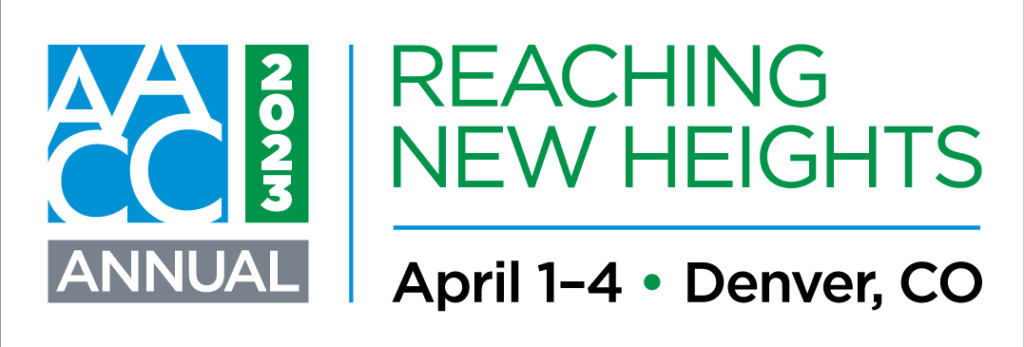Mental health is the next frontier for some community colleges, with Covid bringing into clearer focus the need to improve mental health services to help fulfill their mission of educating students.

The Alamo Colleges District and San Diego City College are two community colleges that are taking novel approaches to improving mental health services.
During the pandemic, Alamo Colleges, which has five colleges in the greater San Antonio area that serve 68,000 students, saw an increase in anxiety, depression, stress and suicide risk and actual suicides among its population served. That is hardly surprising given the San Antonio region has one of the highest poverty rates nationally and was particularly hit hard by Covid losses.
The 2023 AACC Annual will include several sessions on mental health services for students (Search “mental health” for a list of them). Interviewees in this article are among the speakers at those sessions. Register today for the convention.
“So that poverty is linked to a lot of other issues, such as food insecurity, housing insecurity and mental health challenges,” says Gilberto Beccera, Jr., associate vice chancellor for advocacy, retention and completion for the district, who oversees student support services. “A lot of those things intersect, and almost a third of our students were challenged by two or more mental health challenges, such as depression, anxiety, anxiety or something else. And when we got into full-blown pandemic, that number went up.”
Providing basic services became a lynchpin of ensuring mental health at Alamo.
“Security is not just food and shelter, but also includes access to transportation and insurance, so that if they need mental health care, they have access to those services,” says Cristela Garcia, licensed master social worker and director of advocacy at Alamo College’s Northeast Lakeview College. “It also includes access to childcare for our student parents.”
Partnerships with third-party providers help address many such basic student needs.
A network of partners
“We can’t do it all ourselves, but we have many partnerships,” says Leticia Duncan-Brosnan, districtwide director of the college’s Student Advocacy Network, adding that in 2022, the district provided counseling services to more than 3,000 student. “One is with the San Antonio Food Bank. In addition to addressing student nutrition needs, the San Antonio Food Bank is able to fund 50% of a position at each of Alamo’s Colleges’ advocacy centers. That employee helps assist students with [federal Supplemental Nutritional Assistance Program, or SNAP] applications as well as applications for [Children’s Health Insurance Program, or CHIP], which is Texas state-subsidized health insurance.”
With the support of recent state and foundation grants, Alamo Colleges is working to step up its mental health game, says Duncan-Brosnan. The district, for example, received a $200,000 grant from the Trellis Foundation and $300,000 from the Texas Higher Education Coordinating Board to increase mental health and well-being services.
The college is responding with a variety of new initiatives. In summer 2022, for example, it launched the AlamoThrive Cross College Committee to increase mental health support after the return of students from Covid isolation. Through the program, a cross-college team of counselors and social workers who are housed in the advocacy centers and district staff address mental health issues.
The initiative has taken a variety of actions to address student needs. One was suicide prevention training in spring 2022 for six counselors. Those counselors subsequently trained more than Alamo Colleges 100 faculty, staff and student employees across the five district colleges to recognize and address the dangers of student suicides.
Related article: Supporting the mental health needs of rural students
Grant funding is also used to support training in multicultural approaches to counseling, which seeks to train social workers and counselor to more effectively address cultural barriers to seeking mental health treatment. In particular, Becerra says there is African American and Latinx cultural reluctance to seek mental health services, an issue particularly relevant to Alamo given that 81% of Alamo’s students are students of color.
Donor funding and partnerships with the University of Texas Health Science Center at San Antonio has enabled the addition of the district’s first psychiatric nurse practitioner, who has not yet started. The addition will fill a critical former hole in services, Duncan-Brosnan says.
“So we have students with ADHD who need to get psychiatric medications,” says Duncan-Brosnan. “Only a psychiatric nurse practitioner can actually write the prescriptions. We identified that gap, without which our counselors and social workers cannot assist our students, and now this practitioner will rotate among the five colleges. ACD already uses other programs to cover the costs of the medicines with emergency aid.”
Efforts also include a memorandum with Endeavors, a U.S. veteran services provider, to launch wraparound services to provide mental health programs for students who are veterans, including psychiatric care, counseling and navigating Veterans Administration services, all with the help of an assigned veteran peer navigator, Garcia says.
Another program is a Pedagogy of Care training for faculty that seeks to inform them of Alamo mental health services and how they can support students’ with mental health issues in the classroom.
Addressing math anxiety
Math anxiety is nothing new but treating it as a community college mental health issue may be.
Since fall 2020, San Diego City College (SDCC) has embedded mental health as part of instruction in its Mental Health for Math program. The program, a collaboration of SDCC math instructors and mental health counselors, embeds stress and anxiety management into instructional time, such as through muscle relaxation, breathing exercises and self-care and guidance to other mental health resources.
“So we had started a new math developmental pathway for students and in developing that pathway, there was a lot of work done on growth mindset,” says Nick Slinglend, co-chair of the SDCC mathematics department and co-leader of the Mental Health in Math initiative. “We asked, ‘How do we build a math class where all our students can be successful?’ Then our old math chair, Carlos de la Lama, reached out to SDCC’s Mental Health [Center] to do something together. And then during Covid, trying to teach and learn online was a huge challenge, which led us to launch this.”
“Our mental health program at City College really emphasizes preventative outreach,” says Nadia Sayeh, a mental health counselor at SDCC who co-leads the Mental Health in Math program. “And so when we have an opportunity through our collaboration here to be embedded in any activities or instructional spaces, we are absolutely very excited about that. Just going to where the students are to address mental health is a huge part and benefit of this program.”
Going into classes
Many students enter SDCC without the necessary tools and coping skills to manage anxiety and test preparation, Sayeh says. Math classes make sense as a portal to address these issues given it is a subject that gives many students anxiety and also is a threshold course that students take early in their programs of study at the institution that can block further progression if they are not successful, Sayeh says.
Through the program, SDCC mental health team members go into the math classes for a short amount of time, about 15 minutes once a month, to let students know about mental health services and also to do some education around techniques and skills that they can use to help them with stress and anxiety related to math, as well as tools and skills that they can implement across different areas of their lives, Sayeh says. Techniques include breathing, mindfulness and exercises that are buttressed by online video materials.
Recorded topics and sessions include topics like addressing anxiety, self-care and self-advocacy, Sayeh says.
“Each recording has a different focus area, but they all are a blend of education. And there’s also an exercise they’ll kind of walk them through, such as a grounding technique,” she says.

